A History of the Magazine

Founded in Chicago by Harriet Monroe in 1912, Poetry is the oldest monthly devoted to verse in the English-speaking world. Monroe’s Open Door policy, set forth in volume 1 of the magazine, remains the most succinct statement of Poetry’s mission: to print the best contemporary poetry, of any style, genre, or approach. The magazine established its reputation early by publishing the first important poems of H.D., T.S. Eliot, Marianne Moore, Ezra Pound, Carl Sandburg, Wallace Stevens, William Carlos Williams, and other now-classic authors. In succeeding decades, it has presented—often for the first time—works by almost every major contemporary poet.
Poetry has always been independent, unaffiliated with any institution or university—or with any single poetic or critical movement or aesthetic school. It continues to print major English-language poets and emerging talents in all their variety. In recent years, more than a third of the authors published in the magazine have been writers appearing for the first time. On average, the magazine receives more than 15,000 submission packets from around the world each year.
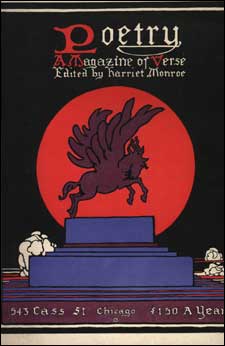
By 1912, the texture of daily and cultural life in the United States already felt recognizably modern: new building materials and methods produced the first skyscrapers, five million Americans went to the movies every day, and the boundaries of acceptability in art and music were being redrawn by the likes of Matisse, Picasso, Schoenberg, and Stravinsky. Monroe’s response to these changes was not uniformly positive—when she saw Marcel Duchamp’s 1912 painting Nude Descending a Staircase at the New York Armory Show, she compared it to “a pack of brown cards in a nightmare or a dynamited suit of Japanese armor”—but she embraced the gesture of the dissident artists: “They throw a bomb into the entrenched camps, give to American art a much-needed shaking up.” Painters and sculptors had answered the new century’s challenge, discovering new forms of beauty and a fresh vocabulary. But American poetry remained stuck in the twilight of the 19th century and an exhausted Romanticism inherited from England:
As some dusk mother shields from all alarms
The tired child she gathers to her breast,
The brunette Night doth fold me in her arms,
And hushes me to perfect peace and rest.
These lines, from Ella Wheeler Wilcox’s poem “Night,” are typical of the verse American magazines and newspapers then sought. When the first issue of Poetry appeared in October 1912, the 51-year-old Monroe could not have foreseen the magazine’s impact. It was as if a bomb had exploded, and nothing would ever look, or sound, the same in American poetry again.
The Renaissance in American Poetry
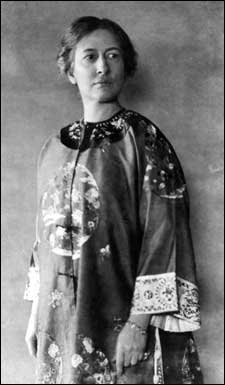
As Monroe looked around Chicago’s cultural landscape in the early years of the 20th century, she saw a world-class symphony and opera, theater troupes, and dance companies, along with more substantial brick-and-mortar evidence of citywide support for the arts, including the Art Institute and the spectacular new Orchestra Hall. She resolved to do something similar for poetry by providing a venue devoted solely to its practice as well as the rare chance for poets to be paid for their work.
Although Monroe herself was not wealthy, she moved comfortably among Chicago’s commercial and cultural elite. One of her first approaches was to novelist, socialite, and institutional trustee Hobart C. Chatfield-Taylor, who suggested a financial plan: convince 100 people to donate 50 dollars a year for five years to underwrite the operations of the magazine. With expenses covered by these donations, subscription income could be used to pay poets. Monroe had enlisted 108 people when she stopped fundraising in June 1912.
Monroe then spent several weeks in the Chicago Public Library, compiling lists of potential subscribers and contributors to whom she sent circulars announcing the new magazine: Poetry: A Magazine of Verse (Karl Shapiro dropped the puzzlingly redundant subtitle in 1950). The poets’ circular assured them “of a chance to be heard in their own place, without the limitations imposed by a popular magazine.” As an early statement of her editorial principles, Monroe wrote, “We shall read with special interest poems of modern significance, but the most classic subject will not be declined if it reaches a high standard of quality.”
Among the first to respond enthusiastically was Ezra Pound. He wrote to Monroe from London, predicting a renaissance in American poetry. Monroe accepted for her inaugural issue the two poems Pound submitted: “Middle-Aged” and “To Whistler, American,” in which he called Americans “that mass of dolts.” She also accepted Pound’s offer to keep an eye out for material, naming him Poetry’s first foreign correspondent.
Together, Pound and Monroe were largely responsible for introducing Modernist poetry to American readers. The revolution was rapid and complete. By 1914, when Pound forwarded “The Love Song of J. Alfred Prufrock” by a 26-year-old unpublished poet named T.S. Eliot, night was no longer Wilcox’s brunette mother sheltering her children; instead it “spread out against the sky / Like a patient etherized upon a table.” In 1918, Alice Corbin Henderson, Monroe’s astute assistant editor, wrote, “Nowadays everyone is writing imagist vers libre, or what the writers conceive as such. … Free verse is now accepted in good society, where rhymed verse is considered a little shabby and old-fashioned.”
The Open Door Policy
Since its inception, the magazine has followed the Open Door policy articulated by Monroe in the second issue. Because of its ecumenical approach, Poetry published a variety of work, from Joyce Kilmer’s “Trees” (the most enduringly beloved poem the magazine has ever printed) and the work of midwestern populists such as Vachel Lindsay, Edgar Lee Masters, and Carl Sandburg to important early works by Eliot, Robert Frost, Wallace Stevens, and William Carlos Williams. The editorial staff’s responsiveness to the variety (and volume) of work it received no doubt helped ensure the magazine’s survival and longevity. By making quality the only criterion, rather than style or politics, Poetry avoided the dangers of a too-narrow adherence to any one agenda or fashion.
Dating from the days when Monroe boiled coffee over a fire in a vacant lot next door to the offices, the Open Door policy was also interpreted more literally. Monroe offered hospitality to many poets when they traveled through Chicago, such as W.B. Yeats (for whom she also arranged a visit to a local spiritualist) and helped many poets financially, both directly and indirectly. In fact, more than a few future contributors and editors—Hayden Carruth, George H. Dillon, Hugh Kenner, Janet Lewis, Henry Rago, and Yvor Winters among them—made their way to Poetry’s offices in their youth, finding the door always open.

Interpreting Harriet Monroe's Legacy
As early as the third issue, Poetry had achieved its distinctive mode, including six translations of the Bengali poet and Nobel Prize–winner Rabindranath Tagore; a selection of work by well-known and new poets from both sides of the Atlantic, including Alice Meynell, John Reed, and Yeats; as well as prose commentary. The eclectic mix was occasionally broken up by a single-topic special number, such as the Poems of War issue of November 1914. Monroe took seriously Emerson’s dictum about the need for the United States to create its own literature without slavish depending on its English cousins. She also often published work in translation. These early issues contain the seeds that editors after Monroe developed.
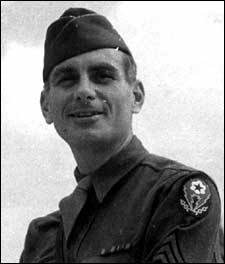
Following Monroe’s death from a stroke in 1936 in Arequipa, Peru, the magazine was edited by her assistant editor, Morton Dauwen Zabel, until George H. Dillon took over in 1937. He was helped by Peter De Vries, who later joined the staff of the New Yorker. They published many of the best young poets from the war years, often for the first time, including John Ashbery (under a pseudonym furnished by a classmate who had stolen the poems), Gwendolyn Brooks, Randall Jarrell, Robert Lowell, Howard Nemerov, Frank O’Hara, and Karl Shapiro. Dillon served in World War II, as did many of the poets he published; the tradition of special issues was continued with the August 1943 issue designated as the Poets in Service Issue. In the 1940s, the magazine printed a great deal of prose as the practice of New Criticism, with its emphasis on ambiguity and close reading, began to dominate English departments in universities. Although much of this criticism was useful, its growing presence in the magazine was also controversial—the essays were often dense, difficult to read, and suited more to academic specialists than general readers.
When Dillon resigned in 1949, he suggested that his assistant editor, Hayden Carruth, replace him. Carruth wanted to print more and longer works by established poets, reducing the number of new voices that appeared. He also continued to tilt the balance of the magazine toward prose, at one point going so far as to include only eight pages of poetry in an issue. Not surprisingly, perhaps, Carruth lasted less than a year in the job.
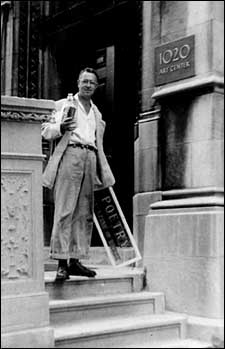
When Karl Shapiro was named editor in 1950, he was 37 years old and already a celebrity—a war veteran, winner of a Pulitzer Prize for his volume of war poems, and a former consultant to the Library of Congress (forerunner to today’s poet laureate position). One of Shapiro’s first editorial decisions was to eliminate the motto from Walt Whitman that had appeared on every issue: “To have great poets, there must be great audiences too.” Perhaps he wanted to update Poetry’s image, which had become a little lackluster, or perhaps he was responding to this comment made by Eliot in a letter: “Poetry remains obstinately the same in appearance as in the days when it printed ‘Prufrock.’ (I have sometimes hoped to see a different quotation, whether from Whitman or somebody else, on the back of it; but even this conservatism is expressive of tenacity.)”
Shapiro’s interest in translation ensured that several interesting special issues came out—on Greek and post-war French poetry, for example—as well as long sections devoted to poets such as Juan Ramon Jiménez several years before he received the Nobel Prize. Like editors before and after him, though, Shapiro finally tired of the many demands upon his attention and left after five years.
Shapiro’s replacement, Henry Rago, met Monroe when he was 14 and published his first poem in Poetry at 16. A lawyer by training and meticulous about details, he was also an energetic fundraiser and interpreted the Open Door policy perhaps more liberally than his immediate predecessors, encouraging young poets—even while gently rejecting their work. He was even more eclectic in his tastes than Monroe, publishing work from many different schools, including confessional poets such as Sylvia Plath, formalists such as James Merrill and Richard Wilbur, and Objectivists such as Louis Zukofsky. Rago’s 14-year tenure (1955–1969) coincided with a second flowering of American poetry and poets, most of whom Rago published extensively, including Robert Bly, Robert Duncan, Donald Hall, Galway Kinnell, Carolyn Kizer, W.S. Merwin, James Schuyler, and James Wright.
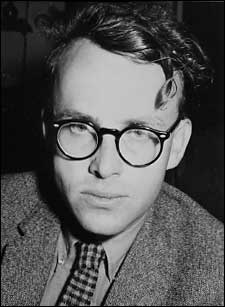
Daryl Hine (1969–1977) was Rago’s replacement. During his tenure, remarkable formalist poetry came to the forefront, and Poetry’s first political stance, an anti–Vietnam War issue (September 1970) appeared. The appointment of John Frederick Nims in 1978 led to greater numbers of newer, younger voices being published, and Nims had the reputation of laboring over many of his rejection notes, providing comments and guidance.
Joseph Parisi (1984–2003), Christian Wiman (2003–2013), and the current editor, Don Share, have carried on the traditions of showcasing established poets alongside new voices (usually one-quarter to one-third of each issue is devoted to first appearances) and presenting to American readers significant selections of poetry in translation in addition to reviews and essays. At a time when more and more people write poetry (Poetry now receives more than 150,000 submissions a year), concerns about what is perceived as a declining audience for poetry have also grown. Except for the loftiness of tone, however, a comment published in the magazine’s first issue sounds as relevant today as it did nearly a century ago: “Anglo-Saxons are always forgetting that poetry is one of the great arts of expression. Many of our customs conspire to cause, almost to force, this forgetting. Thousands of us have been educated to a dark and often permanent ignorance of classic poetry … one early acquires a wary distrust of it as something one must constantly labor over.”
Despite the enduring nature of these worries about poetry’s future, recent editors have added to their many responsibilities the need to develop poetry readership by creating programs for libraries, organizing community events, and commissioning broadcasts and recordings by poets. As Poetry’s activities have expanded, so have its financial requirements, and Parisi’s tenure as editor coincided with the single largest change at the magazine since its founding.
Paying for Poetry
By 1930, none of Poetry’s early competitors, such as the Little Review and the Egoist, still operated. Although the magazine’s Open Door policy helped guarantee its aesthetic survival, as the Depression in the United States deepened, Poetry was in a nearly constant state of financial emergency, and Monroe may have felt that she had ended her initial fundraising in 1912 prematurely. She informed readers in a 1930 editorial that the current issue might be the last. The magazine was saved, however, by many small donations from readers and by a timely corporate grant.

Two years later, the magazine’s 20th anniversary provided the occasion for more worry. For the anniversary issue, Marianne Moore wrote “No Swan So Fine,” which addresses the theme of passing. In a letter to Monroe, Moore wrote, “The thought of your terminating this great work of yours, begun twenty years ago, that has had throughout your particular individuality, saddens me. The article in the Tribune is gratifying, especially the line saying ‘Poetry gives the city a loftier fame throughout the world than any other asset Chicago possesses.’ ... How I do hope that the millionaire will yet come forward.” Monroe herself thought that the magazine would not survive her death. When she died in Peru in 1936, newspaper headlines agonized over the possibility that the magazine might close; once again, the generosity of readers and contributors helped Poetry continue. In 1941, the Modern Poetry Association was formed as a not-for-profit organization whose board members undertook financial responsibility for the magazine. Finances would always remain precarious, however, and the pattern of near collapse followed by last-minute rescue was repeated in coming decades.
Nevertheless, throughout the waxing and waning of the magazine’s fortunes (during one particularly dark period under Shapiro’s editorship, there was only $100 in the bank), Poetry continued to pay its contributors and award prizes, a tradition inaugurated by the Guarantor’s Prize, given to Yeats in 1913. But editors, often practicing poets themselves, nearly always have had to juggle their editorial responsibilities with the need to solicit money from individuals and foundations, a task accomplished with varying degrees of vision, skill, and success. The first Poetry Day, arranged by Henry Rago in 1955, featured Frost, and this fundraiser became a popular annual event, interrupted only in 2001 by the events of September 11.
The Lilly Bequest
In 1986, the pharmaceutical heiress Ruth Lilly endowed Poetry’s Ruth Lilly Prize, at first a $25,000 and now a $100,000 award given annually to recognize a poet’s lifetime achievement. Her generosity also provided Lilly Fellowships given annually to promising undergraduate or graduate students of poetry (a fellowship that has since expanded, with help from the Dorothy Rosenberg Foundation, to five awards for young poets each year). Lilly’s relationship with the magazine began when she submitted some of her poems in 1972, receiving handwritten rejection notes from the editors. Impressed, perhaps, by this evidence of concern for fledgling writers and pleased, as well, by the magazine’s responsible use of her previous contributions, in 2002 Lilly made Poetry a bequest worth more than 100 million dollars, ensuring the magazine’s existence in perpetuity. Since then, the Modern Poetry Association, Poetry’s advisory board, has reorganized itself as the Poetry Foundation, a non-profit organization dedicated to crafting and implementing a new vision for poetry in contemporary American culture.
Poetry's financial situation may have changed, but its mission—to print the best work written by new and established poets—remains the same. Also unchanged is the magazine’s relationship to its authors and the editors’ personal encouragement of aspiring poets. Although, as Eliot noted 50 years ago, “Poetry, in fact, is not a little magazine, but an INSTITUTION,” its commitment to the presentation and development of poetry remains personal—one poem, one poet, one letter at a time.
Editorships
1. Harriet Monroe
October 1912-September 1936
Editorial Staff: Emanuel Carnevali, George H. Dillon, Alice Corbin Henderson, Helen Hoyt, Jessica Nelson North, Ezra Pound, Marion Strobel, Eunice Tietjens, Morton Dauwen Zabel
Support Staff: Mila Straub, Margery Swett, Geraldine Udell, Marianna Von Moltke
Advisors: William T. Abbott, Aksel K. Bodholdt, Percy H. Boynton, H. C. Chatfield-Taylor, George Dillon, Henry B. Fuller, Charles H. Hamill, Arthur T. Leonard, Robert Morss Lovett, Jessica Nelson North, Lew Sarett, Marion Strobel, Eunice Tietjens, Thornton Wilder, Edith Wyatt
2. Morton Dauwen Zabel
October 1936–October 1937
Editorial Staff: Jessica Nelson North
Support Staff: Geraldine Udell
Advisors: Percy H. Boynton, George Dillon, Charles H. Hamill, Arthur T. Leonard, Robert Morss Lovett, Lew Sarett, Eunice Tietjens, Thornton Wilder
3. George Dillon
November 1937–August 1942
Editorial Staff: Peter De Vries, Jessica Nelson North
Support Staff: Amy Bonner, Margedant Peters, Geraldine Udell
Advisors: Percy H. Boynton, Charles H. Hamill, Arthur T. Leonard, Robert Morss Lovett, Jessica Nelson North, Lew Sarett, Eunice Tietjens, Thornton Wilder
4. Group Editorship
September 1942–April 1949
Editors: Peter De Vries, George Dillon, John Frederick Nims, Jessica Nelson North, Margedant Peters, Marion Strobel
Editorial Staff: Hayden Carruth, Katinka Loeser, John Frederick Nims, Margedant Peters, Marion Strobel
Support Staff: Rufus Beyle, Amy Bonner, Vladimir Dupré, J. M. Eichelberger, Marlys Johnston, Herbert Kalk, John Nerber, Margedant Peters, Julia Siebel, Geraldine Udell
Advisors: Amy Bonner, Julia Bowe, Percy H. Boynton, J. V. Cunningham, Peter De Vries, George Dillon, Thomas C. Lea, Arthur T. Leonard, Katinka Loeser, Robert Morss Lovett, William S. Monroe, John Frederick Nims, Jessica Nelson North, Margedant Peters, Lew Sarett, Marion Strobel, Eunice Tietjens, Thornton Wilder
5. Hayden Carruth
May 1949–January 1950
Support Staff: J. M. Eichelberger, Marlys Johnston, Herbert Kalk, John Nerber, Julia Siebel, Geraldine Udell
Advisors: Amy Bonner, Julia Bowe, J. V. Cunningham, George Dillon, Thomas C. Lea, Arthur T. Leonard, Robert Morss Lovett, William S. Monroe, John Frederick Nims, Jessica Nelson North, Margedant Peters, Lew Sarett, Marion Strobel, Thornton Wilder
6. Karl Shapiro
March 1950–September 1955
Editorial Staff: Isabella Gardner, Nicholas Joost, Robert Mueller, Henry Rago, Joseph Wiley
Support Staff: Jane Broeksmit, Gleah Brown, Margaret Cunningham, Margaret Danner, Harold E. Donohue, J. M. Eichelberger, Joan Farwell, Barbara Harris, Marlys Johnston, Nicholas Joost, Herbert Kalk, Madeleine Kilpatrick, Bertha Mayer, Patricia McEnerney, Cornelia McNamara, Charlotte Miller, Robert Mueller, Sue Neil, John Nerber, Evalyn Shapiro, Julia Siebel, Geraldine Udell, Joseph Wiley, Harry Yates
Advisors: Amy Bonner, Julia Bowe, J. V. Cunningham, George Dillon, Wallace Fowlie, Hugh Kenner, Thomas C. Lea, Arthur T. Leonard, Robert Morss Lovett, William S. Monroe, John Frederick Nims, Jessica Nelson North, Margedant Peters, Lew Sarett, Marion Strobel, Thornton Wilder
7. Henry Rago
October 1955–June 1969
Editorial Staff: Frederick Bock, Margaret Danner, Daryl Hine, Robert Mueller, John Frederick Nims, Joseph Wiley
Support Staff: Grace Carone, Flora Grippo, Helen Lothrop, Patricia McEnerney, Julie McLauchlin, Donald H. Merwin, Elizabeth Wright
Advisors: George Dillon, Wallace Fowlie, Hugh Kenner, Jessica Nelson North, Marion Strobel
8. Daryl Hine
July 1969–December 1977
Editorial Staff: Michael Mesic, Joseph Parisi, Joseph Wiley
Support Staff: Rob Colby [Allen], Nadine Cummings, Helen Lothrop Klaviter
Advisors: Virgil Burnett, Wallace Fowlie, Hugh Kenner, Sally Spector, R. Williams
9. John Frederick Nims
January 1978–August 1983
Editorial Staff: Joseph Parisi
Support Staff: Nadine Cummings, Helen Lothrop Klaviter
10. Joseph Parisi
September 1983–September 2003
Editorial Staff: Jim Elledge, Davis McCombs, Drew Swinger, Stephen Young, Aaron Fagan, Damian Rogers
Support Staff: Nadine Cummings, Aaron Fagan, William D. Falloon, Chad Gayle, Helen Lothrop Klaviter, Michael Blaise Kong, Allison Lemieux, Davis McCombs, Douglas Milam, Drew Swinger, Rex Wilder, Stephen Young, Damian Rogers
11. Christian Wiman
October 2003–September 2013
Editorial Staff: Stephen Young, Helen Lothrop Klaviter, Danielle Chapman, Christina Pugh, Fred Sasaki, Scott Stealey, Adam Travis, Valerie Jean Johnson, Don Share, Lindsay Garbutt
12. Don Share
October 2013–August 2020
Editorial Staff: Fred Sasaki, Lindsay Garbutt, Holly Amos, and Hannah Kucharzak
Support Staff: Meaghan Winston
13. Group Editorship
September 2020–April 2021
Editors: Fred Sasaki, Lindsay Garbutt, and Holly Amos
Guest Editors for February 2021 issue: Tara Betts, Joshua Bennett, Sarah Ross
Guest Editors for March 2021 issue: Margarita Engle, Naomi Shihab Nye, Jacqueline Woodson
Support Staff: Hannah Kucharzak, Meaghan Winston, Janet Cheung
14. Guest Editors
May 2021–September 2022
Editors: Ashley M. Jones, Su Cho, Suzi F. Garcia, Srikanth Reddy, Esther Belin
Editorial Staff: Fred Sasaki, Lindsay Garbutt, Holly Amos, and Angela Flores
Readers: Debora Kuan, Tania Quintana, Sarah Ahmad, Noah Baldino, victoria mallorga hernandez, Jenna Peng, Naima Yael Tokunow, Whitney DeVos
Support Staff: Hannah Kucharzak, Janet Cheung
15. Adrian Matejka
2022-present
Editorial Staff: Fred Sasaki, Lindsay Garbutt, Holly Amos, and Angela Flores
Readers: Debora Kuan, Tania Quintana, Sarah Ahmad, Noah Baldino, victoria mallorga hernandez, Jenna Peng, Naima Yael Tokunow, Whitney DeVos
Support Staff: Hannah Kucharzak, Janet Cheung, Winshen Liu
Poetry Collections at University of Chicago
The Special Collections Research Center at the University of Chicago houses Harriet Monroe’s poetry library, personal papers, and the editorial files of Poetry, all of which Monroe donated to the university as a bequest. Some materials within collections may be restricted; for further information on holdings, please contact the Special Collections Research Center directly.
Poetry Collections at Indiana University
The Lilly Library at the Indiana University in Bloomington houses Poetry magazine’s files from 1954 to 2002. The collection includes correspondence, editorial papers, and financial files. For further information on holdings, please contact the Lilly’s Program Services Department directly.
Masthead
Editor: Adrian Matejka
Senior Editor: Lindsay Garbutt
Associate Editor: Holly Amos
Assistant Editor: Angela Flores
